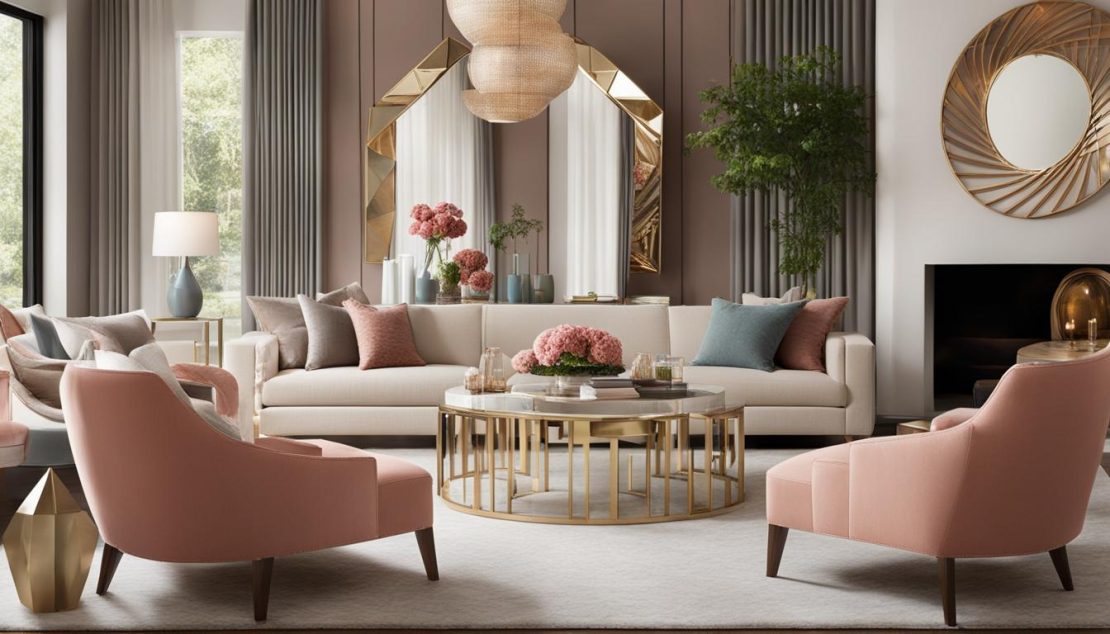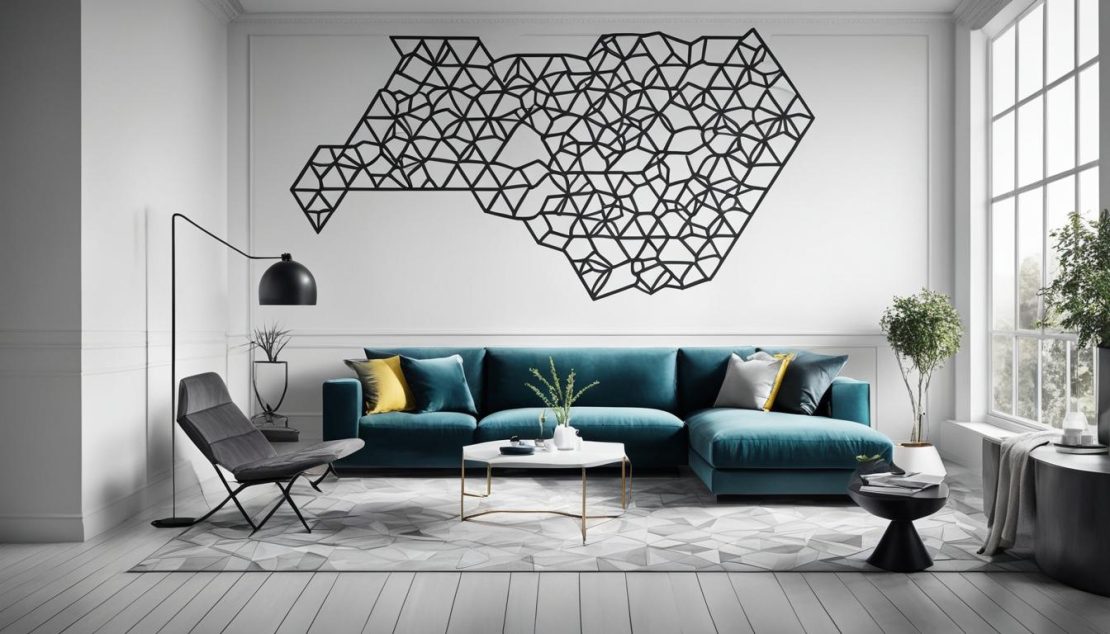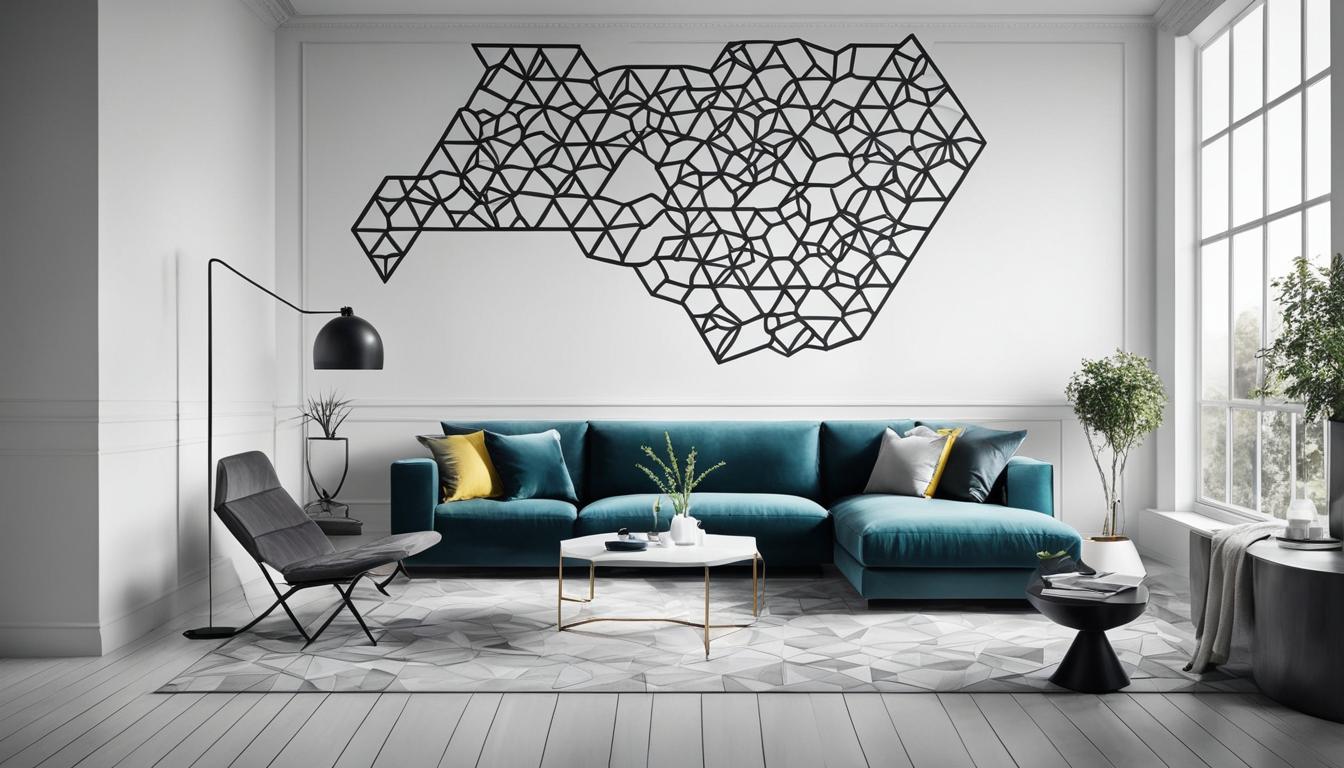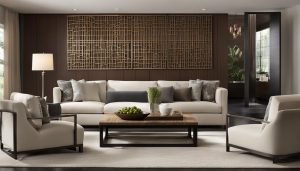Interior designers are experts at creating harmonious spaces, and one of the key tools in their arsenal is geometry. The use of geometric elements in interior design can transform a space from bland to beautiful, creating a cohesive and visually stunning environment.
In this section, we’ll explore how interior designers use geometry to achieve such striking results. From the placement of furniture to the selection of patterns and shapes, we’ll delve into the artistry behind the use of geometric elements. Keep reading to discover the fascinating ways interior designers create harmonious spaces through the use of geometry.

Create an image of a living room with balanced and symmetrical furniture arrangements inspired by geometric shapes. Use warm pastel hues and soft lighting to enhance the harmonious ambiance. Incorporate circular mirrors, triangular tables, and other geometric accents to add interest to the space. Avoid clutter and maintain clean, straight lines for a sleek and modern look.
The Role of Geometry in Interior Design
Geometry plays a crucial role in interior design services for both residential and commercial spaces. Interior designers use various geometric patterns and shapes to create visually appealing and artistically balanced spaces.
For residential interior designers, geometry is essential to balancing the scale of a room by playing with the size and shape of furniture, rugs, and decor. Additionally, commercial interior designers take advantage of geometric design to create visually stunning spaces, showcasing the brand’s personality and style.
By incorporating shapes such as circles, squares, and triangles, interior designers can draw the viewer’s attention to specific areas, create a focal point, or highlight architectural features. Symmetrical and asymmetrical design techniques leverage geometry to induce balance and harmony in an interior space.
Geometric Patterns
Geometric patterns enhance the aesthetic appeal of an interior space. Stripes, zigzags, chevrons, and other geometric shapes are perfect examples of patterns that interior designers use to reflect personality, style, and attitude. By matching geometric patterns and colors with room color schemes, interior designers create harmonious spaces.
Proportions and Shapes
Interior designers take great care in choosing the right shape and size of furniture and decor according to the room’s dimensions and interior design style. They use shapes such as circles, rectangles, and triangles to add flair and dimension to a space. Proportions play an essential role in interior design; it is essential to keep the right dimensions as an overly-large or smaller item can easily throw off the balance.
Residential and Commercial Interior Designers
Residential interior designers focus on designing homes, condos, or apartments, making the most of the living space by incorporating geometric aesthetic appeal without compromising comfort and functionality.
Meanwhile, commercial interior designers specialize in designing restaurants, shops, hotels, and workspaces using geometric designs to create a cohesive brand identity and a pleasant, visually appealing space.
Whether designing a residential or commercial living space, interior designers help clients to embrace geometry’s beauty to create balance and harmony in any room they design.
Contemporary Interior Design: Embracing Geometric Elements
Contemporary interior designers and top interior design firms have embraced the use of geometric elements to create visually stunning and modern spaces. From angular furniture to geometric patterns, interior designers are using these elements to add depth and character to their designs. With their attention to detail and keen eye for design, modern interior designers can take any space to the next level.

Create an image that showcases how geometry is integrated into contemporary interior design. Use shapes and lines to highlight the use of geometric elements such as hexagons, triangles, and rectangles in the design. Add depth and dimension through the use of shadows and gradients. Ensure that the image has a modern and sleek feel to reflect the aesthetics of contemporary design.
Geometry has become a popular trend in contemporary interior design. Minimalism, clean lines, and geometric shapes are hallmarks of this modern aesthetic. By using a simple color palette and creating a strong visual impact through geometry, contemporary interior designers are creating harmonious, yet striking interiors.
The use of angular furniture is one of the defining characteristics of contemporary interior design. Tables, chairs, and lighting fixtures with bold, geometric shapes can create a sense of movement and energy in a room. There is a sense of balance and symmetry despite the asymmetrical design, thanks to the attention to detail of contemporary interior designers.
| Design Element | Use |
|---|---|
| Geometric Patterns | A way to add depth and character to a room while maintaining a clean and minimalistic design. |
| Angular Furniture | Used to create a sense of movement and energy in a room, while still being practical and functional. |
| Minimalist Aesthetics | Creates balance and harmony while keeping the design simple and clean. |
Contemporary interior design is all about creating cohesive spaces through the use of geometry. The modern approach to design revolves around a minimalist aesthetic combined with thoughtful use of geometric elements to create a balance between form and function.
Creating Balance and Harmony with Geometric Design
When it comes to interior design, achieving balance and harmony is crucial for creating a pleasant and visually appealing space. One effective technique that top interior designers and interior decorating services use is geometric design principles.
Geometry, with its perfect symmetry and proportions, can create a sense of balance and order in any room. Interior designers use shapes, lines, and patterns to create a cohesive design that looks and feels harmonious. By incorporating geometric shapes in furniture and decor, they can make a statement while still maintaining balance.
The secret to achieving this balance lies in the careful use of geometry. Too much of it can be overwhelming and chaotic, while too little can be dull and uninteresting. The best interior designers strike the right balance by using a combination of shapes and patterns in their design.
Interior designers also play with color to create balance and harmony in a room. By using complementary colors, they can create a sense of unity and balance in a space. For instance, muted colors like beige and grey complement bright colors like red and yellow, creating a sense of harmony.
Another important aspect of geometric design is the concept of proportion. By using proportion, interior designers can create a sense of balance in a room. For instance, a large geometric pattern on one wall can be balanced out by a smaller one on another wall. This maintains a sense of proportion and harmony throughout the space.
Interior designers know that creating balance and harmony with geometric design is an art form. Working with the right interior designers, best interior designers, or interior decorating services can help you achieve the perfect design for your space.




